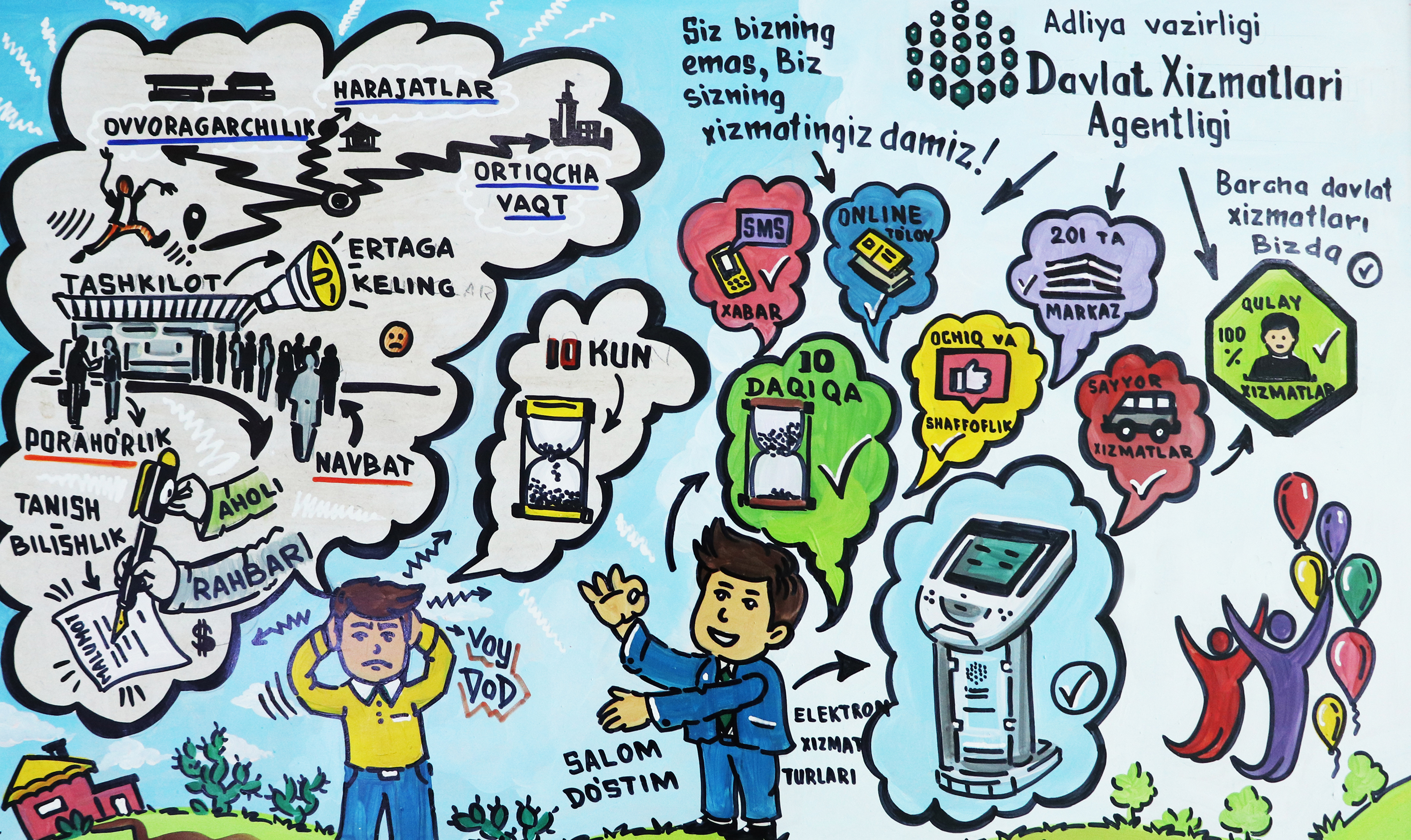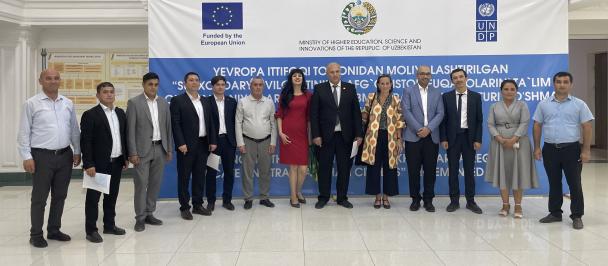Nearly 400 children rise to the challenge in National Drawing Competition
In Uzbekistan, a new approach to promoting public service delivery for families
December 17, 2020
--- Image caption ---
An innovative new approach to stakeholder engagement in Uzbekistan yielded nearly 400 entries in a competition to promote access to public services for families. Children from across Uzbekistan rose to the challenge when asked for their ideas – in the form of art. Submissions came from the rich Ferghana Valley to the deserts of Karakalpakstan, and from the historic streets of Samarkand to the capital of Tashkent.
A total of 398 drawings were submitted to the ‘Public Services for my Family’ art competition, raising awareness among families on how to access and get the most from government services. The United Nations Development Programme and the European Commission organized the competition to engage young minds, who often have a clear and unique perspective that differs from their parents.
UNDP Resident Representative Matilda Dimovska said the different submissions, which were sent in online due to the pandemic, depict stark contrasts between how public services are viewed in rural and urban settings, and from the desert regions and agricultural settings. “The diversity and depth of the art is really remarkable,” she said. “So many young minds with unique and inspiring insights on the public services their families depend on.”
While all entries deserve mention for their value and creativeness, three were chosen as winners in the competition. The nationwide drawing contest was arranged for children aged 6 to 14 and open for submissions from May 1 to May 30. The competition was held in three stages:
- Preliminary selection of 100 drawings by an independent jury for online voting.
- Online voting for the selection of the 20 best drawings (all residents of Uzbekistan through the competition website).
- Determining the winners of the competition by an independent jury of 20 drawings selected by online voting.
In each age category there were six awards presented with gifts (1st place – 1 winner, 2nd place – 2 winners, 3rd place – 3 winners). Also, an additional four winners from the organizers were selected in the framework of special nominations:
- “The most creative drawing” prize from the UNDP in Uzbekistan
- “The brightest drawing” prize of the European Union Delegation in Uzbekistan
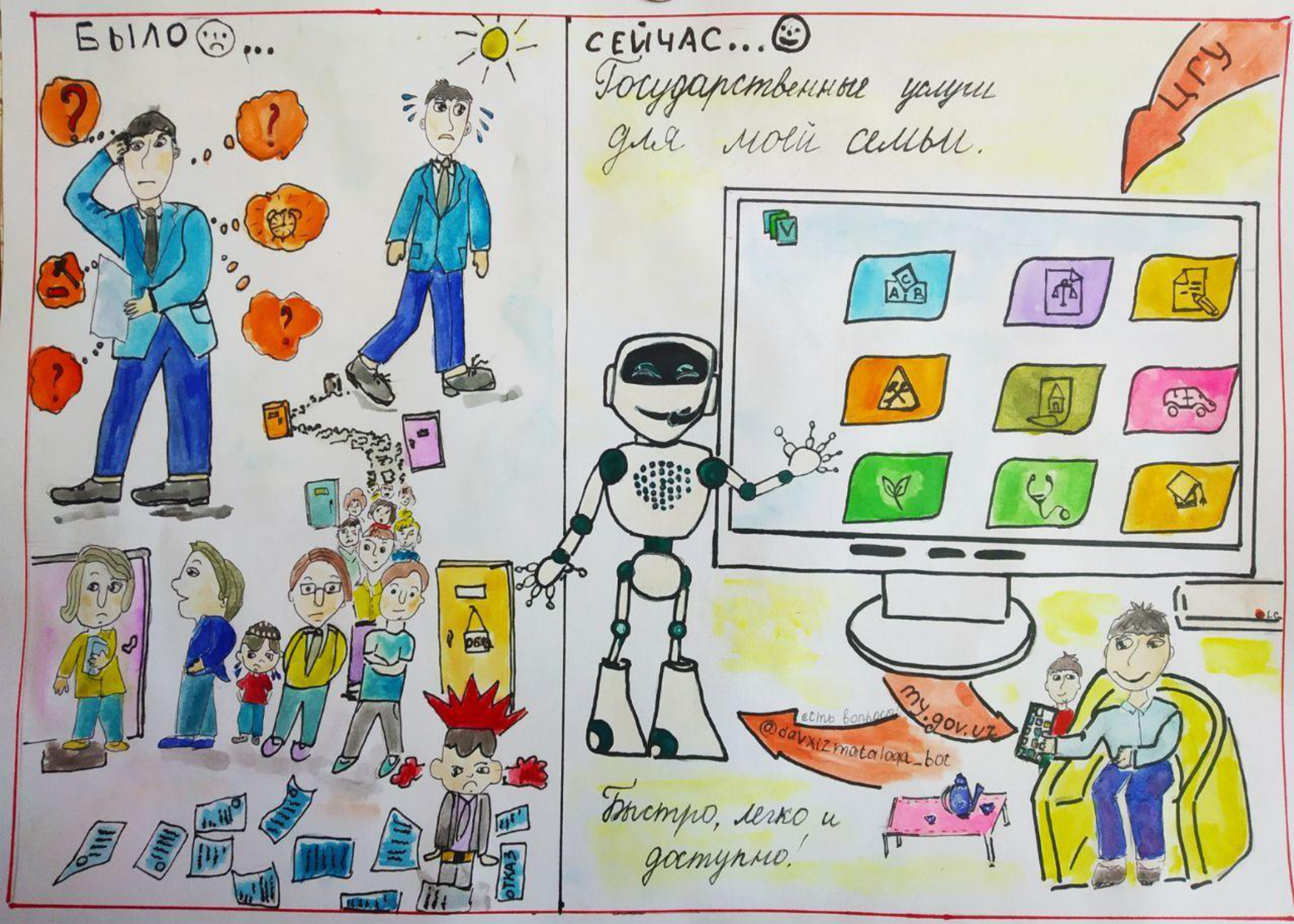
First Place Winner: Daler Hikmatov from Bukhara region with his entry “Rapid, easy and accessible”
Ten-year-old Daler Hikmatov took a before-and-after approach with his artwork, showing the past and present of public services provision in Uzbekistan. His masterpiece, which won first prize, depicts an unfriendly past versus today’s customer-centred approach. The past is depicted with frustrated figures who balk at the piles of paper, endless paper trails and winding queues evoking a calcified bureaucracy, a general lack of streamlining that governed the old process of obtaining various public services. The “present” shows a digitalized world where all services can now accessed from home with just a computer or mobile phone via the portal, my.gov.uz . The heading, “Rapid, easy and accessible”, suggests the new e-system has the end-user in mind.
Daler's parents, Erkin Rakhmatovich and Lolita Ibodullayevna said they believe their children should receive a “well-rounded” education in more than one sphere of activities. They teach them to love art (fine arts, music, choreography), sports, reading and foreign languages. They also emphasize the importance of knowing how to use a computer, like the one Daler received as his first place award. "Now, during a pandemic, when children study remotely, these gadgets are important in the lives of children," said his mother.
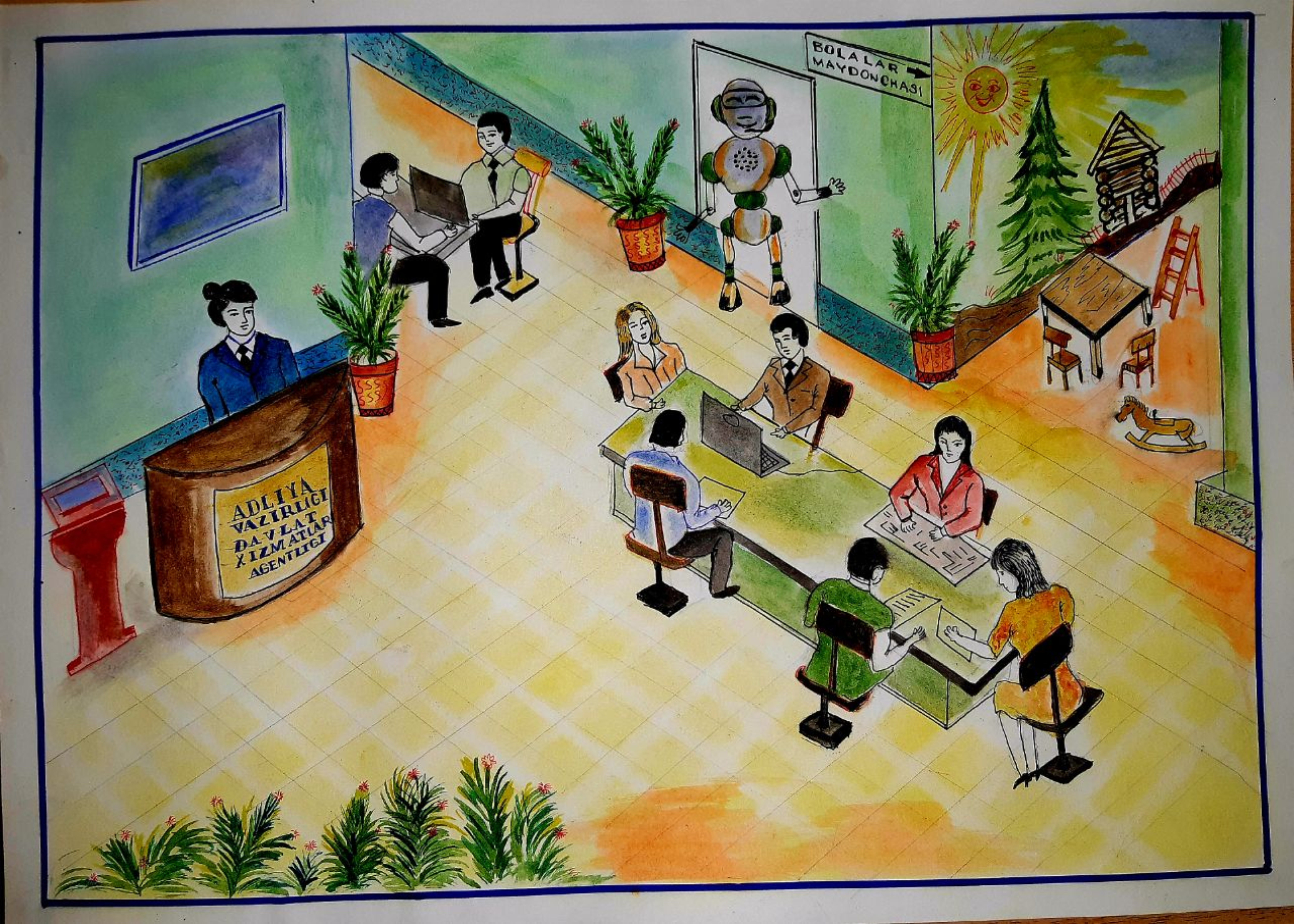
2nd Place Winner: Sevda Yuldasheva from Kashkadarya region with her entry “Public services in better conditions”
Sevda Yuldasheva from the Kashkadarya region won second place for her depiction of a Public Service Centre equipped with computers and service desks, providing critical Public Services Agency (PSA) services available in remote areas. This is the kind of messaging the PSA wants to communicate about its services, and the tech-savvy children clearly showed artistic dexterity, colourful imagination and natural talent in showing frustration with the old system and enthusiasm for PSA’s move into modern services.
Sevda, who is eleven years old and dreams of being a math teacher, said she was inspired to do her artwork during a visit to a service centre with her mother. Together they went to the nearest Public Services Centre, where they saw how the facility was laid out, and how people visit it for completely different reasons. “I saw someone needed a certificate for something,” she said. “And someone else needed to change their car license. It was really interesting.”
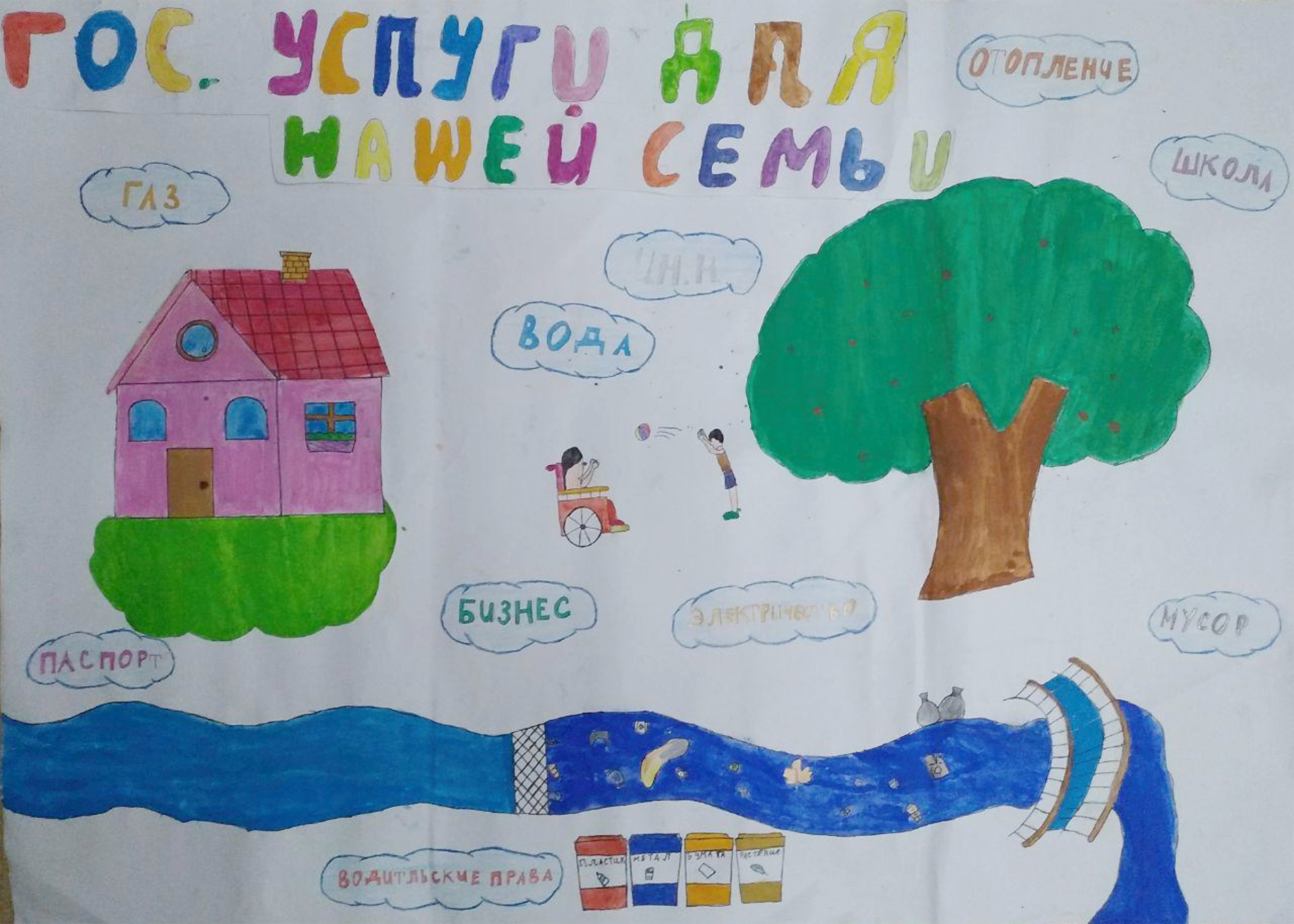
Oyshabonu Bakhromova from Namangan region (TOP 20, 10-14 years) with her entry “Public services for our family”
Eleven-year-old Oishabonu Bakhromova was recognized in the top 20 of the submitted drawings for her depiction of the many areas of daily life that public services can support. “These include paying for utilities, obtaining various certificates or obtaining or renewing a passport, she said, pointing out that persons with disabilities also have to obtain various services and that all public places should be equipped “so that they do not feel left out.”
Oishabonu, who also dreams of becoming a teacher, readily shares her knowledge with the children. She is in the 5th grade studying in a special school focused on English language. She also enjoys reading books, singing songs and baking delicious pies. She was never interested in IT, because she believed that this was the purview of boys. Now, after seeing how many girls in the Public Services Centres are using new technologies in their work, Oishabonu asked her parents to enrol her in IT courses.
“I didn't quite understand what government services were,” she said. “I had to ask my parents about them. I didn’t even expect to be able to win the competition, and it was so unexpected when we received a call from the Namangan Public Services Centre and we were invited to the award presentation ceremony.”
While all 398 entires can be consider winners, the real winners are those families who can take full advantage of the wide range of services offered at these centres. The childen’s entries remind everyone that social media and mobile platforms are replacing traditional channels as a means to interact with the government. People with disabilities, the elderly, youth and children are among these, the goal of the competition being to inform all families about the availability of public services through the Internet portal www.my.gov.uz.
In connection with the Covid 19 pandemic and the inability to organize a drawing exhibition, an online 3D gallery was developed, where anyone can find the winners and their artworks.
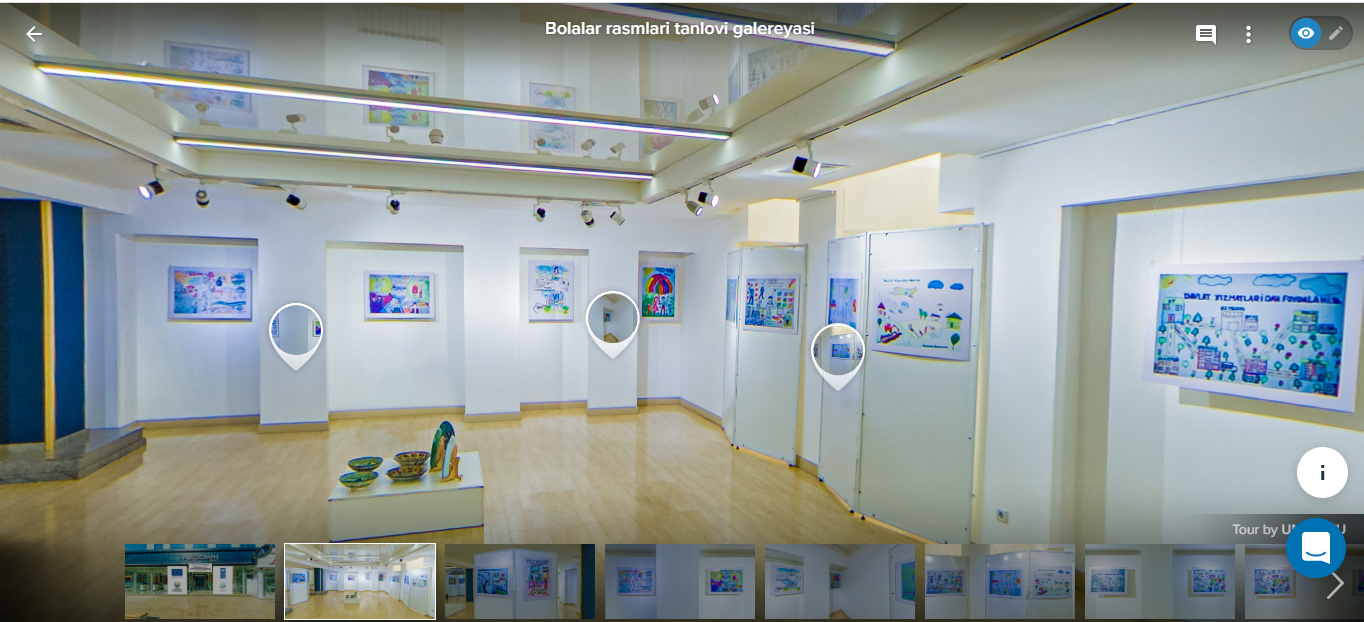

 Locations
Locations